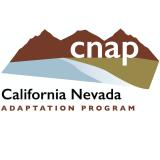CA-NV Water Year Recap/September Drought and Climate Webinar Recording
This water year recap and drought & climate webinar summary was originally sent via email to the California-Nevada DEWS email list.
Current U.S. Drought Monitor Conditions
- Over the course of the 2020 Water Year (Oct. 2019 - Sept. 2020), drought intensified over California-Nevada. On Oct. 13, 2020, over 80% of California and Nevada was in drought, according to the U.S. Drought Monitor, including over 30% in extreme to exceptional drought (D3-D4).
- Conditions worsened over the summer from continued upper level high pressure parked over the west, record heat, and a very weak monsoon.
End of Water Year Update
- CA-NV saw a wet start to the water year, but January and February were dry - record dry in several areas (central CA and northern CA-NV). Wetness only returned in spring to parts of the southern part of the region.
- This year’s monsoon produced little precipitation and much above normal summer temperatures including August records.
- Conditions led to intensified drought conditions, high evaporative demand, and record breaking wildfire season. Over 4 million acres burned in California as of early October.
Drought & Climate Outlook
ENSO
La Niña conditions continued into Sept with below-average sea surface temperatures extending from the Date Line to the eastern Pacific Ocean. NOAA’s ENSO alert system status is currently a La Niña advisory and is likely to continue through the Northern Hemisphere winter 2020-21 (~85% chance) and into spring 2021 (~60% chance during February-April). For more information, check out the NOAA ENSO blog.
Seasonal Drought Outlook
Drought is expected to develop across Southern California. In contrast, conditions are expected to improve in the very northern part of the state. In the middle, and throughout Nevada, drought is expected to persist.
Temperature
Warm temperatures are favored over California-Nevada through early winter with >40% chance of above-normal November-January temperatures.
Precipitation
The southern part of California and Nevada are forecasted to be drier than normal (33% chance) for November-January, following the historical pattern of La Niña. However, some La Niña years in the recent past have been exceptions to the “typical” pattern.
Wildland Fire
Ongoing large fire activity, La Niña, and current fuel conditions are the main drivers of significant fire potential through fall and into winter. Drought conditions are expected to continue for much of California, the Great Basin, and the southwest U.S. through October. Significant fire potential is forecast to remain above normal for California due to the number of active large fires, near record dry fuels, and anticipated offshore wind events. Above normal significant fire potential is also expected in eastern Nevada.
Acknowledgments
- Andrea Bair, NOAA National Weather Service Western Region
- Shrad Shukla, UC Santa Barbara/CNAP
- Dan McEvoy, Western Regional Climate Center/CNAP
For webinar-related questions or suggestions, please contact: Amanda Sheffield, amanda.sheffield@noaa.gov





